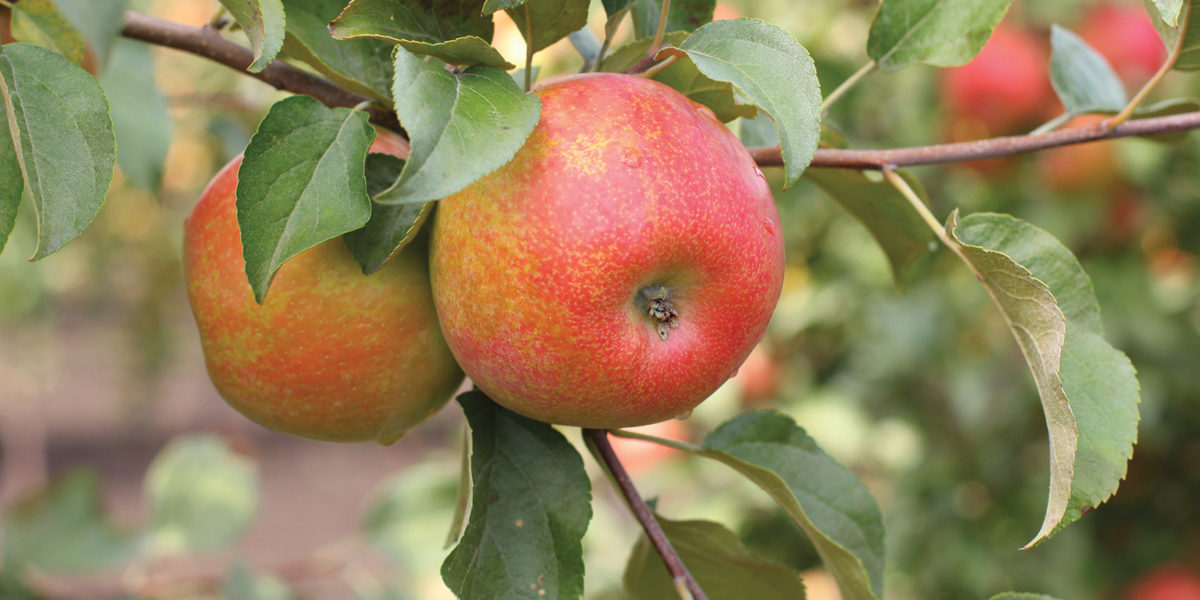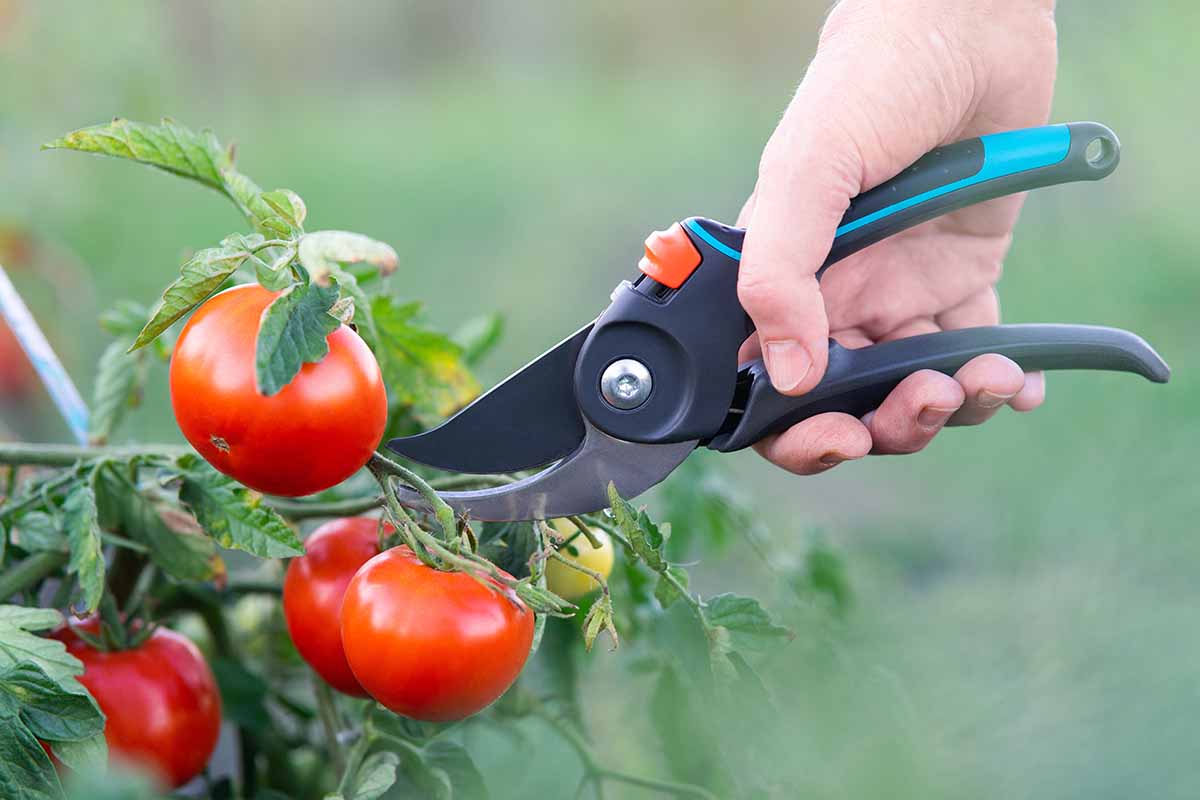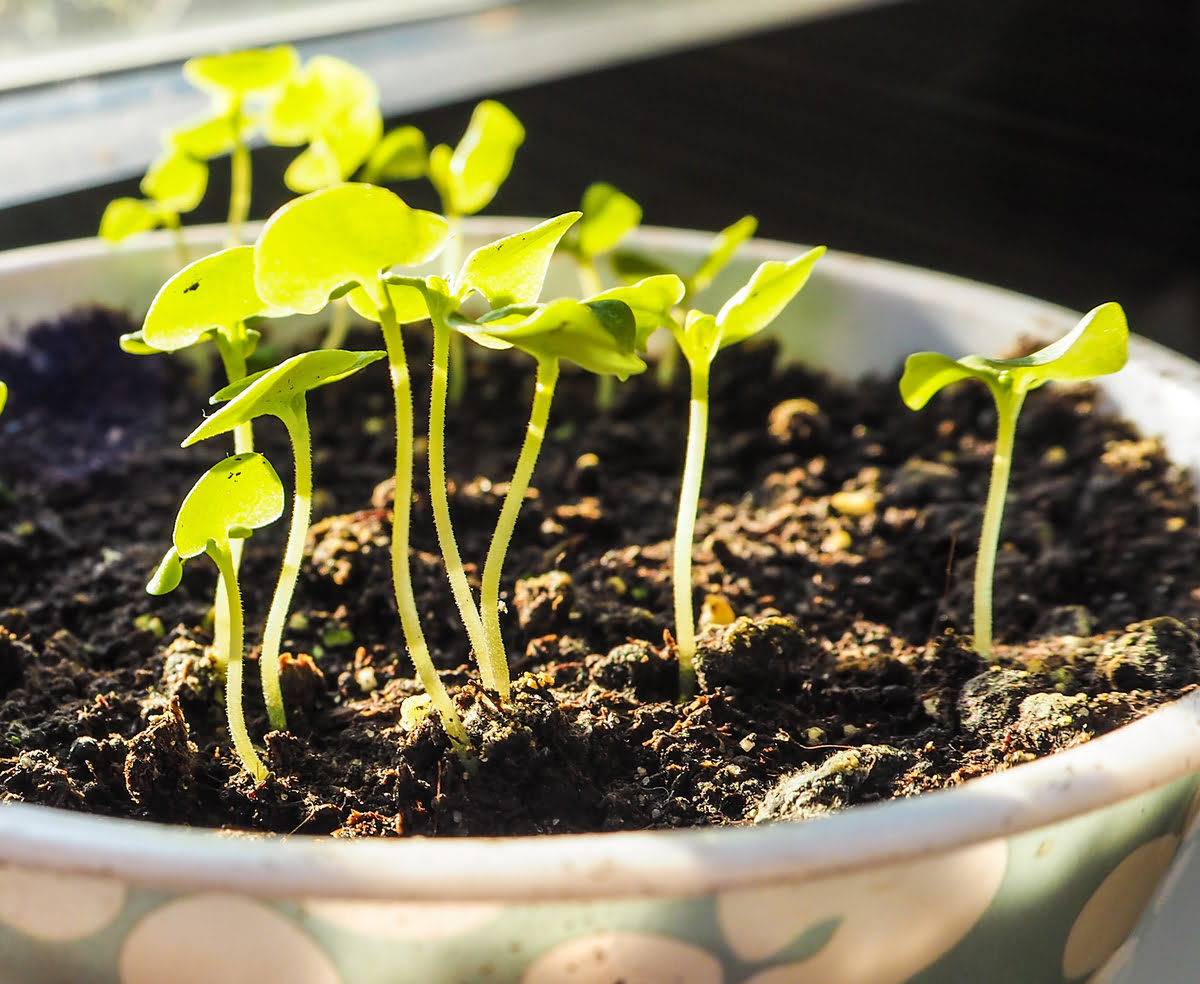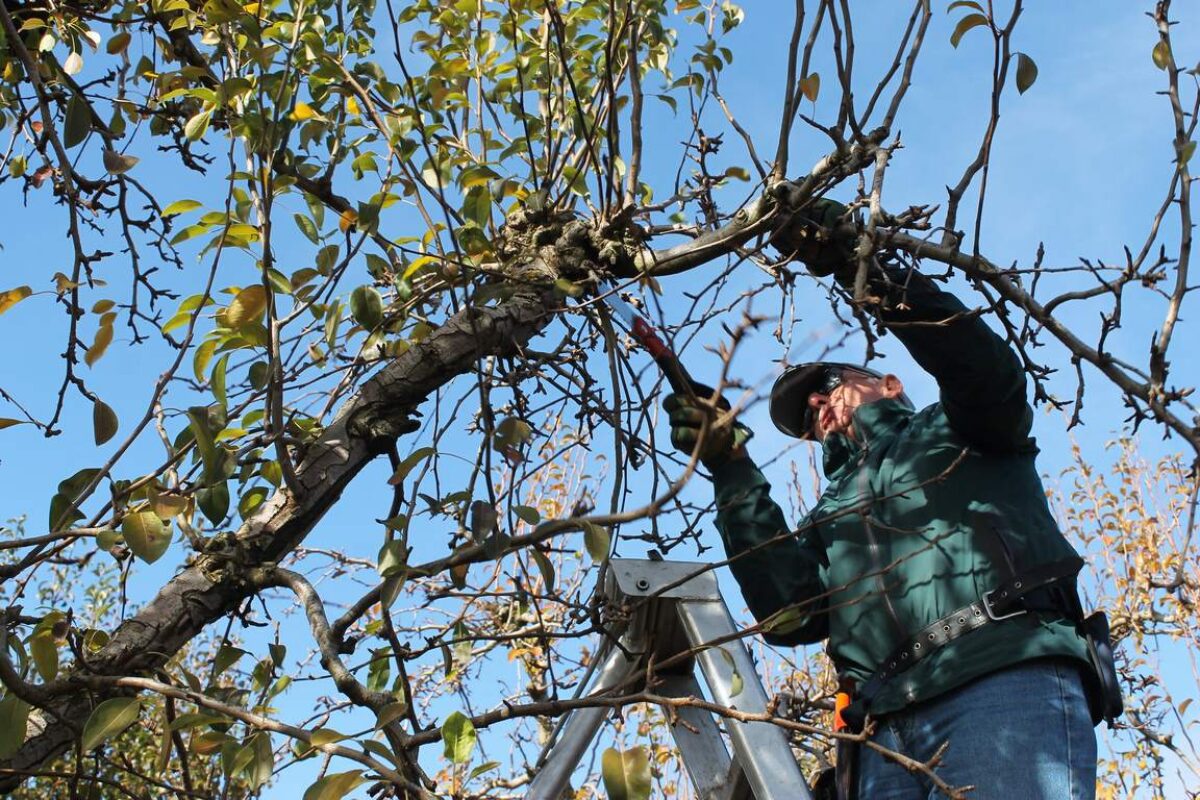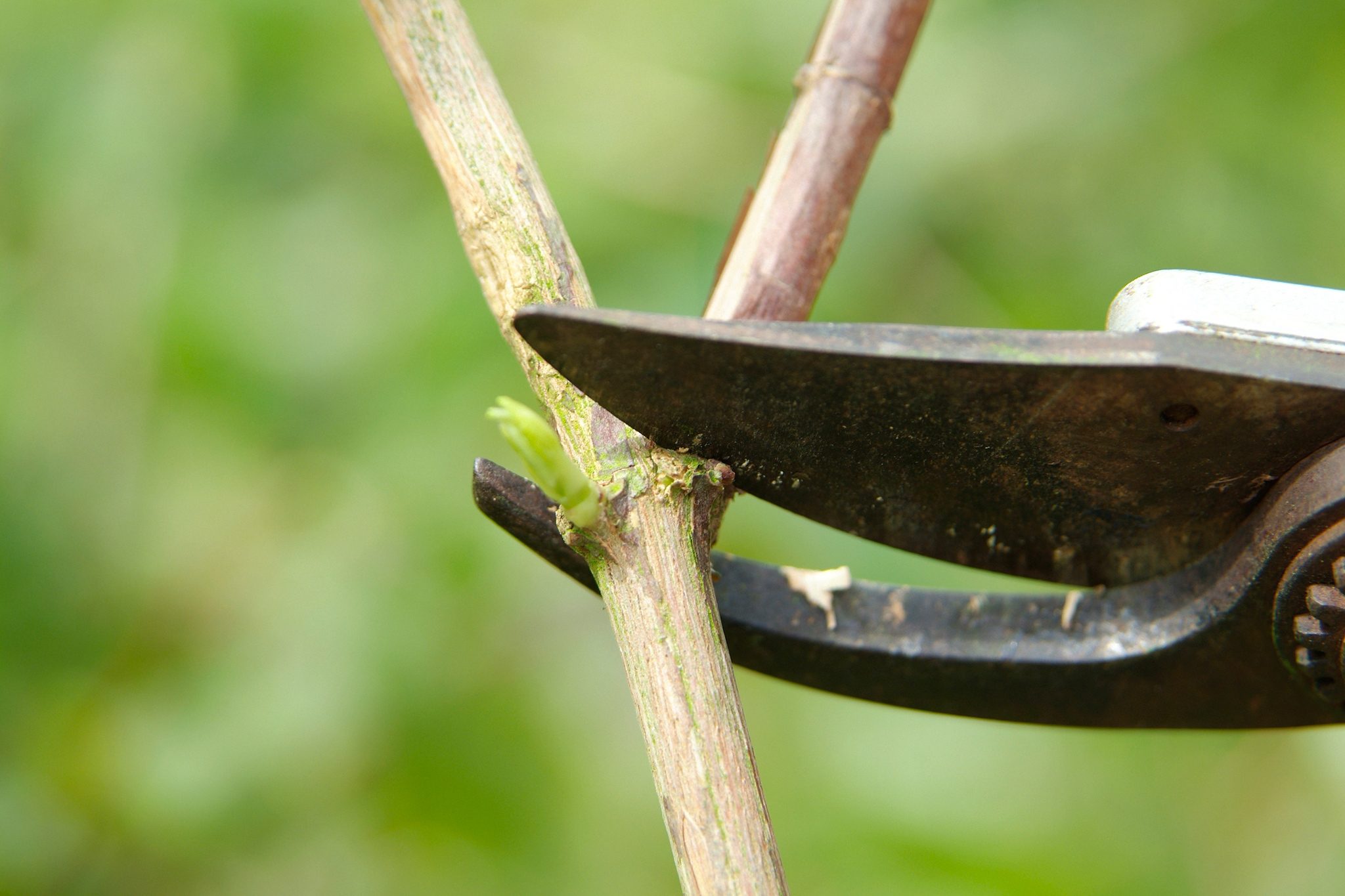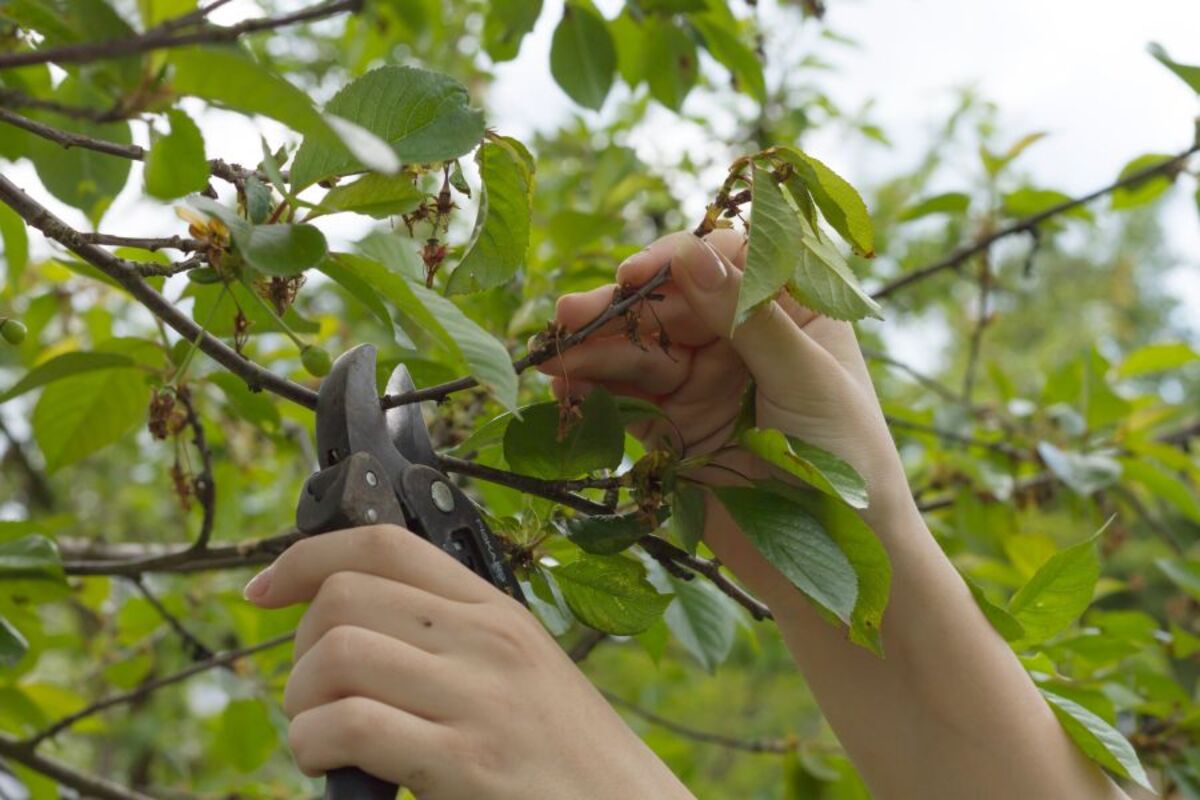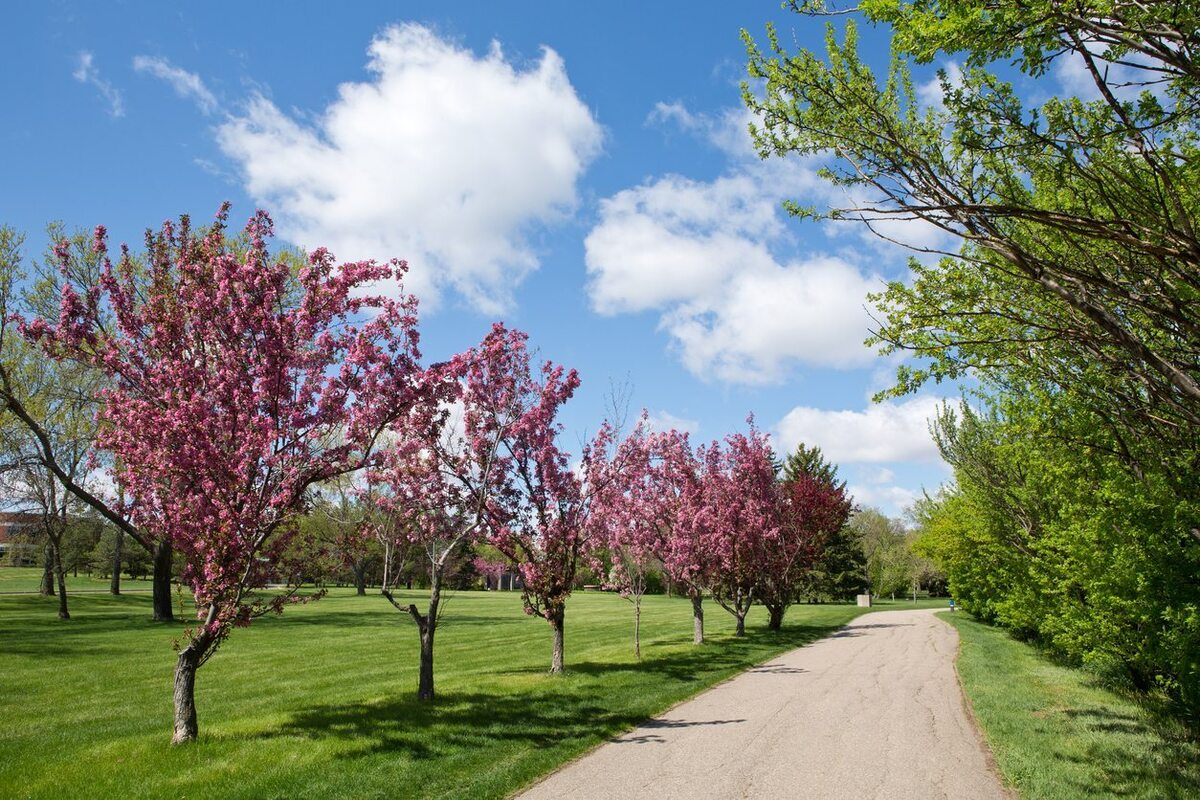Home>Gardening Techniques>Plant Care>Pruning Grape Vines When
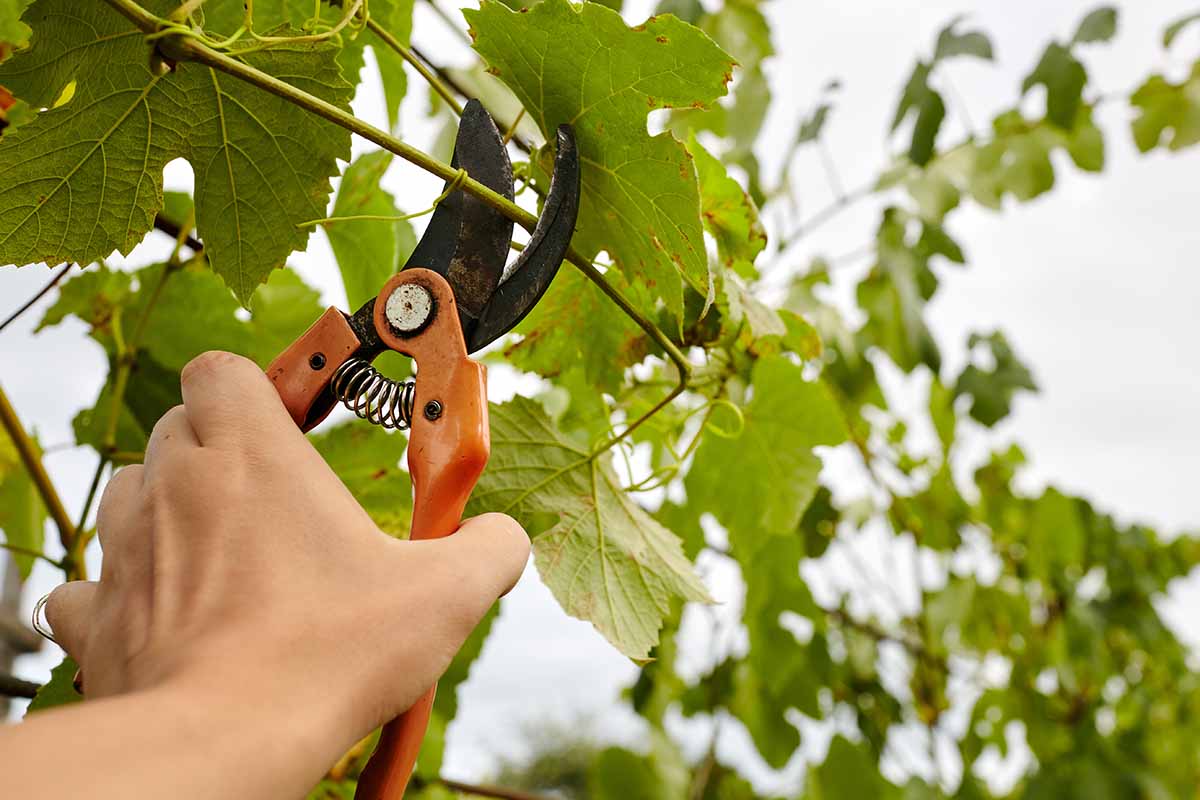

Plant Care
Pruning Grape Vines When
Modified: January 22, 2024
Learn the tips and techniques for pruning grape vines and ensuring proper plant care. Maximize your grape harvest with our expert advice.
(Many of the links in this article redirect to a specific reviewed product. Your purchase of these products through affiliate links helps to generate commission for Chicagolandgardening.com, at no extra cost. Learn more)
Table of Contents
Introduction
Gardening enthusiasts and vineyard owners alike know the importance of proper plant care for their grapevine plants. One essential aspect of maintaining grapevines is pruning. Pruning grapevines not only promotes healthy growth but also ensures a bountiful harvest. Understanding when and how to prune grapevines is crucial for the overall health and productivity of the plants.
In this comprehensive guide, we will delve into the art of grapevine pruning, exploring the best practices, techniques, and tools needed to achieve optimal results. Whether you are a seasoned gardener or just starting out, this article will equip you with the knowledge and skills required to enhance the beauty and productivity of your grapevine plants.
Grapevine pruning is a centuries-old practice that dates back to ancient times. It involves selectively removing certain parts of the grapevine to promote growth, control shape and size, improve airflow, and increase sun exposure. Pruning helps to maintain the health and vigor of the grapevines by removing dead, diseased, or damaged wood, allowing the plant to channel its energy towards new growth.
Pruning also plays a crucial role in maintaining the balance between vegetative growth and fruit production. By carefully selecting which branches to remove, gardeners can control the number of grape clusters produced, resulting in better fruit quality and increased yield.
It is important to note that proper timing is essential when it comes to grapevine pruning. Pruning at the wrong time can have detrimental effects on the plant, such as reduced fruit production, increased disease susceptibility, and weakened overall health. Understanding the specific timeframes for pruning different types of grapevines is crucial for achieving successful results.
So, grab your pruning shears and join us as we explore the fascinating world of grapevine pruning. Get ready to learn the best techniques, tools, and timing for taking care of your grapevine plants, and watch as they thrive and produce bountiful, flavorful grapes.
Understanding Grape Vine Pruning
Grape vine pruning is not just a haphazard process of chopping off branches; it is a precise technique that requires a thorough understanding of the plant’s growth habits. By understanding the principles behind grapevine pruning, you can make informed decisions regarding branch selection and timing, resulting in healthier and more productive plants.
One key aspect of grapevine pruning is recognizing the two types of growth that grapevines exhibit: fruiting wood and non-fruiting wood. Fruiting wood refers to the branches that produce grape clusters, while non-fruiting wood consists of the stem and branches that support the fruiting wood. Pruning is primarily focused on maintaining an optimal balance between these two types of growth.
Another important concept in grapevine pruning is the understanding of cane versus spur pruning. Cane pruning involves the removal of most of the previous year’s growth, leaving behind a small number of buds that will produce the following year’s fruiting wood. Spur pruning, on the other hand, involves leaving behind small spurs along the main branches, where the new fruiting wood will emerge.
The choice between cane and spur pruning depends on factors such as grape variety, training system, and the health and vigor of the plant. Cane pruning is generally preferred for vigorous vine varieties, as it allows for better airflow and reduces the risk of disease. Spur pruning, on the other hand, is often used for more delicate varieties that may require closer attention to fruit production and vine balance.
Understanding the growth habit and vigor of your grapevine plants is vital when it comes to pruning. Vigorous varieties tend to produce more vigorous shoots, which may require more severe pruning to maintain an appropriate balance. Less vigorous varieties, however, may require less aggressive pruning to avoid excessive vegetative growth at the expense of fruit production.
Lastly, it is crucial to consider the desired shape and size of your grapevine when pruning. Different training systems, such as the popular vertical shoot positioning (VSP) or the traditional pergola, require specific pruning methods to achieve the desired form. Pruning techniques like shoot thinning and canopy management play a crucial role in shaping the grapevine and optimizing sunlight exposure, airflow, and overall plant health.
By understanding the principles of grapevine pruning, including the balance between fruiting and non-fruiting wood, the choice between cane and spur pruning, the vigor of the plant, and the desired shape and size, you will have a solid foundation for effective and successful pruning practices. Armed with this knowledge, you are ready to embark on the journey of cultivating healthy and productive grapevine plants.
When to Prune Grape Vines
Timing is crucial when it comes to pruning grape vines. Pruning at the right time of year ensures optimal growth, reduces the risk of disease, and promotes better fruit production. The specific timing for pruning grape vines can vary depending on the climate, grape variety, and the desired outcome. Let’s explore the different pruning seasons and the factors to consider when determining the best time to prune your grape vines.
Winter Pruning: The most common time to prune grape vines is during late winter or early spring, before the buds start to swell. Winter pruning is advantageous because the vines are dormant, making it easier to see the structure of the plant and identify which branches to remove. This pruning period allows the vine to redirect its energy towards new growth in the upcoming season. However, it’s important to avoid pruning too early in winter when the risk of frost damage is still present.
Summer Pruning: In addition to winter pruning, grape vines may also benefit from summer pruning. Summer pruning involves removing excess foliage and shoots that hinder sunlight penetration and airflow. This type of pruning is particularly useful for managing vine vigor and managing the canopy’s density. Summer pruning is typically done after the vines have completed their rapid growth phase in early summer but before veraison (the onset of ripening).
Pruning Newly Planted Grape Vines: Newly planted grape vines require special attention in their first few years. The initial pruning for these vines should be done at planting time to establish the framework of the plant. This involves selecting one or two strong canes and removing all other shoots and buds. In subsequent years, focus on training the vine to the desired shape and structure by selectively pruning and training the strongest shoots.
Considerations for Pruning Time: When determining the ideal time to prune, it is important to consider your specific climate and weather patterns. Pruning too early in regions prone to frost can leave the vines susceptible to cold damage. Pruning too late may result in reduced fruit production as the plant expends energy on growing new shoots rather than ripening the fruit. Additionally, always monitor the progress of bud break in your grape vines and time your pruning accordingly.
It is worth noting that some grape varieties have different pruning requirements based on their growth habit. Some varieties may require more severe pruning to control their vigor, while others may need minimal pruning to ensure an adequate fruit yield. It is essential to understand the specific pruning recommendations for your grape variety to achieve the best results.
In summary, pruning grape vines should be done during the dormant season in late winter or early spring when the buds have not yet started to swell. Additional summer pruning may be necessary to manage vine vigor and maintain optimal canopy density. Consider the climate, grape variety, and desired outcome when determining the pruning time for your grape vines. With careful timing, you can ensure healthy growth, improved disease resistance, and a plentiful harvest from your grape vine plants.
Signs that Indicate the Need for Pruning
Pruning is a vital aspect of grapevine care, and knowing when to prune is crucial for maintaining plant health and productivity. While there are specific times of the year to prune, certain indicators can help you identify when pruning is necessary outside of those designated periods. By keeping an eye out for these signs, you can ensure that your grapevines receive the pruning they need at the right time.
Overgrown Canopy: One of the most apparent signs that your grapevine requires pruning is an overgrown canopy. If the foliage becomes dense and excessive, it can impede sunlight exposure and airflow, leading to poor fruit development and increased risk of disease. If you notice a thick and tangled canopy, it is an indication that pruning is necessary to promote better airflow, reduce the risk of fungal infections, and improve fruit quality.
Disease or Pest Infestation: Grapevines are susceptible to various diseases and pests. If you observe signs of disease, such as black spots on leaves or damaged fruit, it is essential to inspect the plant thoroughly. Pruning infected or damaged parts can help manage the spread of disease and prevent it from spreading to healthy areas. Similarly, pruning away infested portions can help eliminate pests and reduce the risk of further damage.
Weak or Dead Wood: Another clear sign that your grapevine requires pruning is the presence of weak or dead wood. Weak wood may appear pale, brittle, or stunted, indicating that it is struggling to grow. Dead wood, on the other hand, will be dry, brittle, and lifeless. Pruning away weak or dead wood is essential to maintain the plant’s overall health and vigor, as these branches no longer contribute to growth or fruit production and can be entry points for pests and disease.
Uneven Growth: It is not uncommon for grapevines to exhibit uneven growth, with some branches growing vigorously while others lag behind. This imbalance can have a detrimental effect on fruit production. Pruning allows you to promote more balanced growth by selectively removing excessively vigorous branches and redirecting the plant’s energy towards weaker ones. By doing so, you encourage a more uniform and fruitful canopy.
Overcrowded Clusters: Adequate spacing between grape clusters is essential for healthy fruit development. If you notice clusters that are densely packed or overlapping, it is an indication that pruning is necessary. Thinning out excess grape clusters improves air circulation, reduces the risk of fungal disease, and allows each remaining cluster to receive adequate nutrients and sunlight for optimal ripening.
Pruning is an art that requires careful observation and understanding. By recognizing signs such as an overgrown canopy, disease or pest infestation, weak or dead wood, uneven growth, and overcrowded clusters, you can identify when your grapevines need pruning. Regularly assessing the health and growth of your grapevines will help ensure that pruning is done at the appropriate time and promote the long-term vitality and productivity of your grapevine plants.
Tools and Equipment Needed
Pruning grape vines requires the use of specific tools and equipment to ensure clean cuts, minimize damage to the plants, and maintain your safety. Having the right tools at hand will make the pruning process more efficient and effective. Here are the essential tools and equipment you will need for pruning grape vines:
- Pruning Shears: Pruning shears, also known as hand pruners or secateurs, are essential for making precise cuts on smaller branches. Look for a pair of bypass pruners with sharp, high-quality blades that can easily cut through grapevine wood.
- Loppers: Loppers are larger pruners with long handles, allowing you to reach and cut thicker branches that cannot be handled with regular pruning shears. Look for loppers with sharp blades and a sturdy construction for easy and effective pruning.
- Pruning Saw: A pruning saw is necessary for cutting through thick wood, such as larger grapevine branches or old, woody canes. Choose a pruning saw with a curved blade and aggressive teeth that can quickly and cleanly cut through tough wood.
- Gloves: To protect your hands from thorns, prickly stems, and potential injuries, wear a pair of durable gardening gloves. Opt for gloves that offer a balance of protection and dexterity, allowing you to handle the tools and vines comfortably.
- Eye Protection: Pruning can sometimes result in twigs or branches flying towards your face. Protect your eyes by wearing safety goggles or glasses to prevent any potential injuries.
- Cleaning Equipment: It is essential to keep your tools clean and sterilized to prevent the spread of diseases between plants. Have a bucket with a mixture of water and household bleach or rubbing alcohol nearby to dip your tools between cuts or at the end of your pruning session.
- Ladder or Step Stool: Depending on the height of your grapevines, you may need a ladder or step stool to reach higher branches safely. Choose a stable and sturdy ladder or step stool that can support your weight and provide a secure platform during pruning.
Having these tools and equipment readily available will streamline the pruning process and ensure that you can efficiently care for your grape vines. Remember to periodically clean and maintain your tools to keep them in optimal condition, as sharp and well-maintained tools will make the pruning process easier and more effective.
Step-by-step Pruning Process
Pruning grape vines is a skill that requires careful attention to detail and following a proper step-by-step process. By following these steps, you can ensure that your grapevines are pruned effectively, promoting healthy growth and optimal fruit production. Let’s dive into the step-by-step pruning process:
- Assess the vine: Begin by closely observing the grapevine. Identify any dead or damaged wood, weak branches, or overgrown areas that need to be pruned.
- Start with winter pruning: If it is the appropriate time of year for winter pruning, begin by removing the oldest canes. Select the strongest canes that are well-spaced and located towards the outside of the vine. Remove any excess canes, leaving behind a manageable number according to the grape variety and training system.
- Make clean cuts: Use clean and sharp pruning shears or loppers to make precise cuts. Aim for cuts that are as close to the bud as possible without injuring it.
- Remove weak or damaged wood: Prune out any weak or damaged wood, including branches that are diseased, broken, or crossing over each other. Removing these branches will prevent the spread of diseases and maintain a healthy structure.
- Thin out excess growth: If the vine has excessive growth or a crowded canopy, selectively thin out the shoots and foliage to improve airflow and sunlight penetration. This will help prevent diseases and optimize fruit production.
- Consider training and shaping: Pay attention to the desired shape and training system for your grapevine. Train and shape the vine accordingly by pruning shoots that do not conform to the desired structure, ensuring that the vines are properly supported and trained along the trellis or other support system.
- Clean and sterilize: After pruning each vine, dip your pruning tools into a cleaning solution to sterilize them and prevent the spread of diseases. This is especially important when moving from one vine to another.
- Dispose of pruned material: Remove and dispose of the pruned material properly to prevent the accumulation of pests, diseases, or potential damage to the vine in the future.
Throughout the pruning process, periodically step back and assess the overall shape and balance of the grapevine. Aim for an open and well-spaced canopy to ensure good airflow and sunlight exposure for the fruiting wood. Remember, the specific steps and techniques may vary depending on the grape variety, training system, and individual vine conditions.
By following these step-by-step pruning guidelines, you can effectively prune your grape vines, promoting healthy growth, disease resistance, and optimal fruit production. Regular pruning will help maintain the overall vigor and longevity of your grapevines, ensuring that they continue to thrive and provide you with bountiful harvests for years to come.
Pruning Techniques for Different Types of Grape Vines
Pruning grape vines may vary depending on the specific variety and the training system employed. Different grapevine types have distinct growth habits and pruning requirements. To ensure that you prune your grape vines effectively, it is important to understand the specific techniques for different types of grape vines. Let’s explore the pruning techniques for a few common grape vine types:
1. Cane-Pruned Vines: Cane-pruned vine varieties, such as Cabernet Sauvignon and Merlot, typically require cane pruning to maintain their balance and productivity. During winter pruning, select the most robust and well-positioned canes on the vine. Remove all other excess canes, leaving behind a few canes with a sufficient number of buds. These canes will produce the fruiting wood for the upcoming season. Prune the selected canes back to a manageable length, typically leaving around 8 to 12 buds per cane.
2. Spur-Pruned Vines: Spur-pruned vine varieties, including Pinot Noir and Chardonnay, are pruned differently. Instead of selecting and keeping canes, you will focus on maintaining a permanent framework of spur positions along the main cordon or trunk of the vine. During winter pruning, retain a few well-spaced spur positions from the previous growth season. Each spur should have around 2 to 3 buds. Remove excess or non-productive spurs, and trim the retained spurs to an appropriate length for optimal growth and fruit production.
3. Head-Trained Vines: Head-trained vine varieties, such as Zinfandel and Grenache, are pruned differently from trellised vines. These vines are typically pruned to a “head,” which is a single trunk or a few main branches that emerge from the ground. During winter pruning, remove any weak or damaged wood. Select and retain a few strong branches (depending on the desired plant shape), and trim them to an appropriate length, usually leaving a few buds on each branch. Maintain a balanced and open shape, allowing for adequate sun exposure and airflow.
4. Espalier-Trained Vines: Espalier-trained vine varieties, like Riesling and Gewürztraminer, are pruned to maintain a specific shape against a flat or trellis framework. Pruning techniques for espalier-trained vines focus on maintaining the desired shape and directing growth along the trellis. Prune the shoots and branches that grow beyond the designated framework, keeping the vine trained in the desired shape. Thin out excess growth, leaving behind well-spaced shoots that can be easily tied to the trellis.
It is important to note that these are general guidelines, and specific pruning techniques may vary based on factors such as grapevine age, health, and growth patterns. Additionally, different training systems, such as vertical shoot positioning (VSP), Geneva Double Curtain (GDC), or pergola, may require slight modifications to the pruning techniques.
When in doubt, consult with local viticulture experts or experienced grape growers to understand the specific pruning requirements for your grape vine variety and training system. A tailored approach to pruning will help ensure the optimal growth, structure, and productivity of your grape vines, resulting in healthy plants and abundant fruit harvests.
Common Mistakes to Avoid
Pruning grape vines can be a complex task, and even experienced gardeners can make mistakes. Avoiding these common pruning mistakes will help ensure the health and productivity of your grape vines. Let’s explore some of the most common mistakes to avoid when pruning your grape vines:
1. Improper Timing: Pruning at the wrong time of year can have detrimental effects on grape vines. Pruning too early in the winter when frost is still a risk can damage the vine. Pruning too late in the season may result in reduced fruit production. It is essential to understand the specific timing requirements for your grape variety and climate and adhere to those guidelines.
2. Overpruning: Overpruning can lead to excessive vegetative growth and decreased fruit production. Pruning too severely can deplete the plant’s resources and hinder its overall health. It is important to strike a balance between pruning enough to maintain the vine’s structure and optimizing fruit production, but not removing too much growth.
3. Poor Cut Execution: Making improper cuts can harm the grape vines and increase the risk of disease. Avoid leaving stubs or making cuts too close to the bud, as this can inhibit proper healing and promote infection. Use sharp pruning tools and make clean cuts at the appropriate angle to ensure the best results.
4. Neglecting Tool Maintenance: Using dull or dirty pruning tools can damage the vines and spread disease. It is crucial to regularly clean and sterilize your pruning tools to prevent the transfer of bacteria or fungi between plants. Keep your tools sharp to ensure clean cuts and make the pruning process more efficient.
5. Failing to Prune Diseased Wood: Neglecting to remove diseased or infected wood during pruning can allow diseases to spread throughout the vineyard. It is essential to identify and remove any diseased or damaged wood to prevent the further spread of pests or pathogens.
6. Ignoring Training and Support Systems: Grape vines rely on trellises, stakes, or other support systems for proper growth and structure. Ignoring the training and support systems can result in a disorganized plant shape and increased risk of damage. Regularly inspect and maintain the support structures and train the vines accordingly during pruning.
7. Not Adapting to Vine-Specific Pruning Needs: Different grape varieties and training systems have specific pruning requirements. Failing to adapt to these needs can impede the growth and productivity of the vines. Take the time to research and understand the specific pruning techniques for your grapevine type, training system, and desired outcomes.
By avoiding these common pruning mistakes, you can promote the health, vigor, and productivity of your grape vines. It is always beneficial to stay educated on proper pruning techniques and seek advice from local experts or experienced grape growers. With proper care and attention, your grape vines will thrive and provide you with abundant, flavorful grapes for years to come.
Conclusion
In conclusion, the art of pruning grape vines is a fundamental aspect of plant care that directly impacts the health, growth, and productivity of these beloved plants. By understanding the principles and techniques of grapevine pruning, you can effectively shape the vines, enhance airflow and sunlight exposure, and promote optimal fruit production.
Timing is crucial when it comes to grapevine pruning. Pruning during the appropriate season, such as late winter or early spring, ensures that the vines are dormant and ready for regrowth. Identifying signs that indicate the need for pruning, such as an overgrown canopy or weak and dead wood, allows for targeted and informed pruning decisions.
Equipped with the necessary tools and equipment, including pruning shears, loppers, and a pruning saw, you are ready to embark on the step-by-step pruning process. Assessing the vine, making clean cuts, and removing weak or damaged wood are vital steps in fostering the overall health and balance of the plant.
Understanding the specific pruning techniques required for different types of grape vines, such as cane-pruned, spur-pruned, head-trained, or espalier-trained vines, allows for a tailored approach to pruning that meets the unique needs of each grape variety and training system.
As with any gardening practice, there are common mistakes to avoid, such as improper timing, overpruning, poor cut execution, neglecting tool maintenance, failing to prune diseased wood, ignoring training and support systems, and not adapting to vine-specific pruning needs. By being mindful of these mistakes, you can ensure that the pruning process is carried out effectively and to the benefit of the grapevines.
In summary, pruning grape vines is an essential skill for any plant enthusiast or vineyard owner. By applying the knowledge and techniques outlined in this comprehensive guide, you can cultivate healthy grape vines, optimize fruit production, and reap the delicious rewards of your labor.
